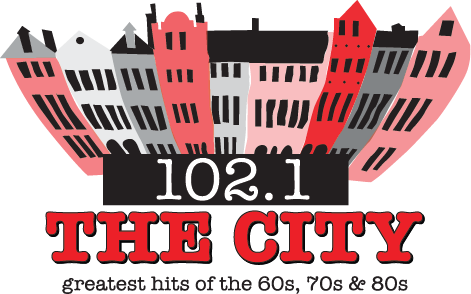Titan hearing continues following NTSB expert revealing issues found in sub implosion debris
NORTH CHARLESTON, S.C. (WCBD) — To begin the seventh day of a Coast Guard inquiry into why a submersible imploded, killing all five of its passengers, a National Transportation Safety Board chief engineer explained all the issues he found in the sub once he examined the debris.
Dr. Don Kramer, chief of NTSB’s Materials Laboratory, presented the lab’s findings when examining the debris left from version 2 of the Titan’s hull. Some anomalies listed included waviness, wrinkles, porosity, voids in the hull structure, and rubbing damage.
Dr. Kramer clarified that it is unclear whether these anomalies were present before the Titan imploded so far in the investigation.
William Kohnen, with Hydrospace Inc., testified that his company created the first window for the Titan’s hull. However, the window cracked and was not in use when the sub imploded. Kohnen also drafted the Marine Technology Society letter of concern regarding the Titan’s development, addressed to the late OceanGate CEO Stockton Rush.
This letter was never formally sent, but Rush ended up receiving one of the drafts; however, Kohnen does not know who gave it to him. Kohnen also used his time to give a brief overview of submersible history and make recommendations regarding certification and classification.
Bart Kemper with Kemper Engineering presented reports and analysis on the Titan makeup.
Thursday’s witnesses include Justin Jackson with the National Aeronautics and Space Administration, Mark Negley with Boeing, and John Winters with the Coast Guard Sector Puget Sound.
Lieutenant Commander Jonathan Duffett with the Coast Guard Office of Vessel Compliance will close the day.
LIVE UPDATES:
10:55 a.m.
Recess called until 11:15 a.m.
10:51 a.m. – 10:54 a.m.
Boeing engineers recommend storing a carbon fiber cylindrical hull in a controlled area. Weather elements and temperature can affect the carbon fiber.
1/3rd scaled models should be accounted for the same as full-scale models, according to Negley
10:46 a.m.
OceanGate and Boeing worked together in 2012 to 2013 and then they worked together in 2016.
10:45 a.m.
Boeing did not manufacture parts for OceanGate.
10:43 a.m.
OceanGate requested Boeing bring their commercially available acoustic emission system to test on one of their models, according to Negley, although he was not there for the testing.
10:41 a.m.
Negley says he has a general knowledge of acoustic emission sytems.
10:38 a.m.
Boeing does conduct carbon fiber residual destructive tests.
10:37 a.m.
Curing the part, the carbon fiber composite hull, creates residual stresses such as thermal stress, according to Negley.
The way you cure the part creates different stresses.
10:27 a.m.
Boeing never saw a full design from OceanGate, Negley said.
10:22 a.m.
Boeing came up with an analysis that included a 7 inch hull they thought would be feasible for the hull. It was not super detailed and didn’t account for all aspects of the design.
10:21 a.m.
To Negley’s knowledge, Boeing has built a composite structure 12 inches thick but it was not the same size and structure as the carbon fiber hull OceanGate was wanting them to build.
10:20 a.m.
Boeing was asked to complete a preliminary feasibility study for OceanGate.
10:19 a.m.
Before working with OceanGate, Negley worked on a number of small composite pressure vessel hulls through Boeing, he said.
10:18 a.m.
Negley details educational and professional background.
10:16 a.m.
Mark Negley with Boeing called to testify.
10:15 a.m.
Hearing back in session.
9:28 a.m.
Recess called.
9:24 a.m.
NASA and OceanGate stayed in contact when test dives started on the Titan in 2021. The contact ended shortly after.
The media releases involving NASA from OceanGate were approved by NASA. One got denied because it made it seem like NASA was endorsing OceanGate.
9:11 a.m.
NASA did not recommend carbon fiber curing for the hull.
9:09 a.m.
OceanGate was responsible for paying for all of NASA’s services, according to Jackson.
9:07 a.m.
OceanGate did talk plans for deep sea exploration at the beginning with NASA which included exploring shipwrecks. OceanGate did not make clear the pressure testing they were going to do on their hull.
Due to COVID, the actual work was not performed NASA basically just consulted.
9:06 a.m.
If wrinkles are still in your parts post-fabrication you have to analyze there impact and effects, according to Jackson. It is not common practice to sand off wrinkles.
9:04 a.m.
NASA has been involved with building passenger carrying pressure vessels. The team recommended a heated debulk for keeping wrinkles out of the carbon fiber, according to Jackson.
9:01 a.m.
The designs of a spacecraft and submersibles should be treated differently. NASA was interested in other applications for materials than the submersible.
9:00 a.m.
A multi-curing process helps reduce wrinkles in the final design of carbon fiber.
8:56 a.m. – 8:58 a.m.
Jackson has manufactured pieces of carbon fiber up to 2 inches thick. A team of NASA engineers worked on carbon-fiber material testing with OceanGate. The team made recommendations for testing of thick carbon fiber pieces.
8:54 a.m.
OceanGate was supposed to pay over $148,000 for services but received only $40,000 and NASA returned close to $124,000.
8:51 a.m.- 8:53 a.m.
The purpose of the Reimbursable Space Act is to give companies access to NASA facilities so partnerships can work on mutually beneficial projects.
There were 14 responsibilities for NASA on the agreement which was signed in the beginning of 2020.
NASA provided remote consultation for the 1/3rd scale models but did not do any manufacturing, Jackson said.
8:50 a.m.
Jackson said the relationship with NASA and OceanGate began because they needed somewhere to build a composite cylinder.
Bob Shuman OceanGate COO originally reached out.
8:49 a.m.
Jackson did not have submersible experience before working with OceanGate.
8:48 a.m.
Jackson details educational and professional background.
8:45 a.m.
Justin Jackson with NASA called to testify.
8:33 a.m.
Hearing to reconvene at 8:45 a.m.
8:30 a.m.
Hearing in session.
—
STAY CONNECTED: Receive news alerts from this hearing and watch it on the go with the NEWS 2 APP (download it here). You can also subscribe to daily emails for the latest news on the titan hearings.
Click Here for the Full Article
Author: Jameson Moyer







